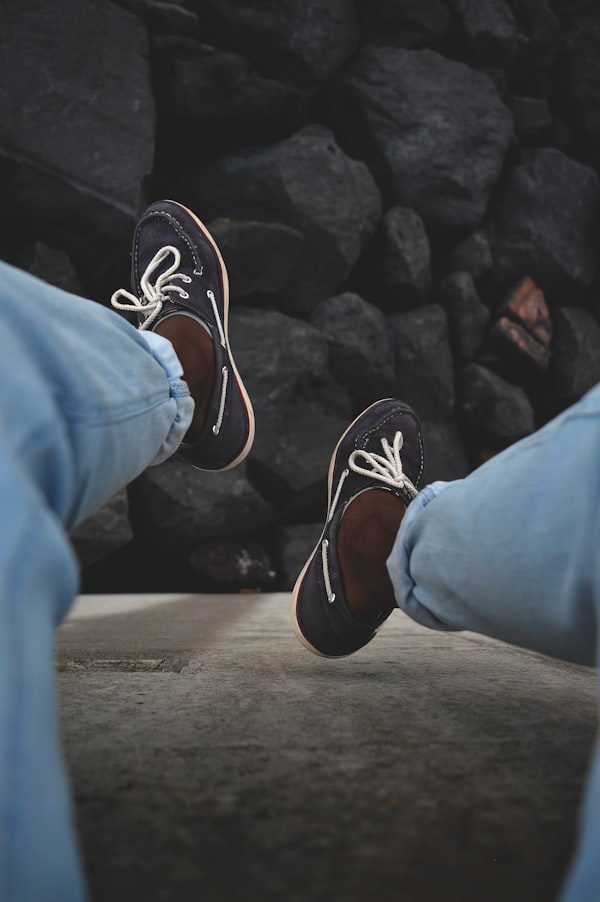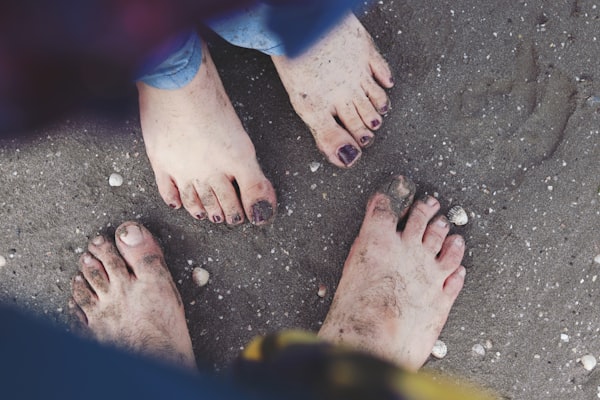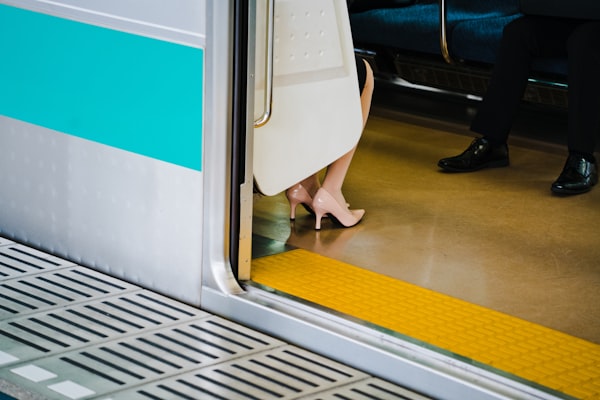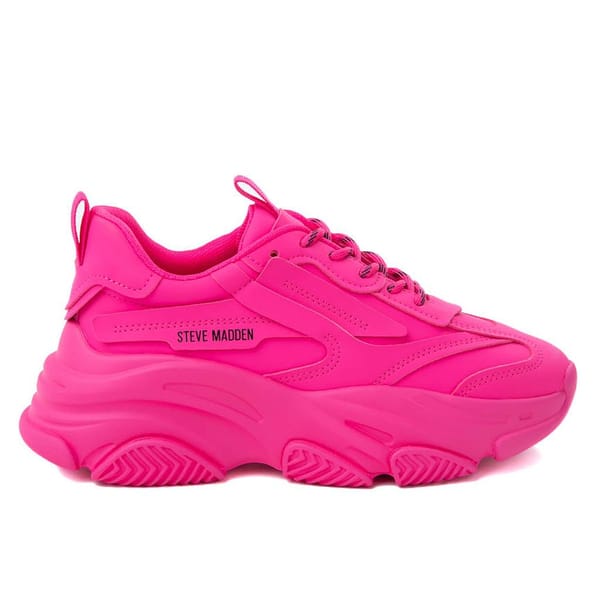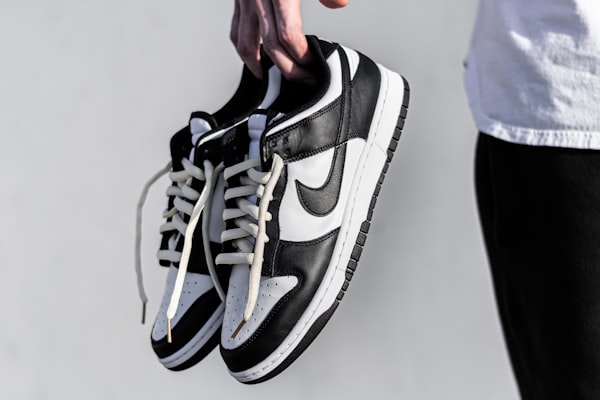Are you tired of feeling like your feet are holding you back from conquering the world? If bunions are cramping your style, it's time to kick discomfort to the curb and strut your stuff with confidence!
Imagine this: you're ready to take on the day enthusiastically, but those pesky bunions are throwing a wrench in your plans. Fear not! We're here to unravel the mystery behind bunions, empowering you to reclaim your stride and step out in style.
You deserve to walk through life feeling comfortable and fabulous, whether hitting the streets or dazzling at a soirée. With the proper knowledge and footwear, you can bid farewell to bunion woes and hello to a world of pain-free elegance.
Dive into our comprehensive guide, where we'll arm you with everything you need to know about bunions and the footwear solutions that will have you walking on air. Say goodbye to discomfort and hello to a life of stylish ease – your feet will thank you!
Understanding Bunions
Bunions, medically known as hallux valgus, are bony bumps that form on the joint at the base of the big toe. They develop when the big toe leans inward towards the second toe, causing the joint to protrude and become swollen. This misalignment creates pressure on the joint, leading to inflammation and discomfort. Bunions can vary in size and severity, ranging from mild to severe.
Common Causes of Bunions
Bunions aren't always straightforward in their origins. While the exact culprit might be elusive, a few likely suspects are in the lineup.
1. Genetics
The tendency to develop bunions often runs in families, hinting at a genetic component. Individuals with a family history of bunions are more likely to develop them, suggesting an inherited predisposition to the condition.
2. Foot Structure
Certain foot shapes, such as flat feet or low arches, can predispose individuals to bunions. These structural abnormalities alter the distribution of weight and pressure on the foot, increasing the likelihood of bunion formation over time.
3. Improper Footwear
The shoes we wear can significantly impact bunion development.

Tight, narrow shoes or high heels force the toes into a cramped and unnatural position, placing excessive pressure on the joint at the base of the big toe. Over time, this constant pressure can contribute to the misalignment and enlargement of the joint, exacerbating bunion formation.
4. Injury or Trauma
Previous foot injuries or trauma to the toe joint can also play a role in bunion development. Damage to the joint can disrupt its normal alignment and stability, leading to the development of a bunion over time as the body attempts to compensate for the injury.
5. Arthritis
Certain types of arthritis, such as rheumatoid arthritis, can contribute to the development of bunions. Arthritis causes inflammation and joint damage, leading to joint deformities and instability. In the case of bunions, arthritis can exacerbate joint inflammation and accelerate the progression of bunion formation, further compromising foot structure and function.
Symptoms and Signs of Bunions
Bunions manifest through a spectrum of symptoms, varying in severity from mild discomfort to debilitating pain. Recognizing these indicators early can facilitate prompt intervention and management. The hallmark symptoms of bunions include:
- Pain or Tenderness: Individuals often experience localized pain or tenderness at the base of the big toe, where the bunion forms. This discomfort may range from a dull ache to sharp, stabbing pain, particularly during weight-bearing activities like walking or standing.
- Swelling and Inflammation: The affected joint may exhibit swelling and inflammation, causing the surrounding skin to appear red and tender. This inflammation is often exacerbated by pressure and friction from footwear, leading to increased discomfort.
- Redness or Irritation: The bunion itself may become red and irritated, especially when subjected to prolonged periods of pressure or rubbing against shoes. This can further exacerbate pain and discomfort, making walking or wearing shoes challenging.
- Difficulty Wearing Shoes: Bunions can make finding shoes that fit comfortably, especially ones with narrow or tight-fitting toe boxes, challenging. Individuals may experience discomfort or pain when wearing certain types of footwear, leading to a reluctance to engage in activities that require prolonged standing or walking.
- Corns or Calluses: Corns or calluses may develop over the bunion or between the toes due to friction and pressure. These thickened areas of skin can cause additional pain and discomfort, further complicating the bunion's impact on daily activities.
- Limited Range of Motion: As the bunion progresses, individuals may notice a decrease in the range of motion in the big toe joint. This limitation can affect mobility and exacerbate discomfort, particularly during activities requiring foot and toe flexibility.

Recognizing these signs and symptoms early is crucial for timely intervention and preventing the worsening of bunions. Seeking professional evaluation and treatment can help alleviate pain, improve foot function, and prevent further complications associated with bunions.
Treatment Options
Non-surgical interventions are often the first line of treatment for managing bunions, particularly in mild to moderate cases. These approaches focus on relieving pain, reducing inflammation, and addressing underlying factors contributing to bunion formation. Common non-surgical treatments include:
- Orthotics: Custom or over-the-counter orthotic inserts can help redistribute pressure on the foot, alleviate pain, and correct biomechanical imbalances that contribute to bunion formation. These inserts provide support and stability, promoting proper alignment of the foot and reducing strain on the affected joint.
- Padding: Padding or cushioning placed over the bunion can provide additional protection and reduce friction, minimizing pain and irritation caused by footwear rubbing against the bunion. Gel or foam padding can help alleviate discomfort and prevent the development of corns or calluses over the bunion.
- Splinting: Toe splints or spacers can be used to help realign the big toe joint and prevent further progression of the bunion. These devices are typically worn at night and help maintain proper toe alignment, reducing pressure on the bunion and promoting natural joint alignment over time.
In cases where non-surgical treatments fail to provide adequate relief or the bunion becomes severely symptomatic, surgical intervention may be necessary to correct the deformity and alleviate pain. Surgical procedures for bunions aim to realign the bones of the foot, remove excess bone or tissue, and restore proper joint function. Standard surgical techniques for bunions include:
- Bunionectomy: This procedure involves removing the bony bump of the bunion and realigning the bones of the big toe joint. Depending on the severity of the bunion, different surgical techniques, such as osteotomy (bone cutting) or arthrodesis (joint fusion), may be employed to correct the deformity.
- Soft Tissue Correction: In addition to addressing bony deformities, surgical intervention may involve tightening or realigning the soft tissues surrounding the bunion to provide stability and support to the joint.
- Recovery and Rehabilitation: Following bunion surgery, patients typically undergo a period of recovery and rehabilitation to restore function and mobility to the foot. This may involve wearing a protective boot or cast, physical therapy exercises, and gradually returning to weight-bearing activities under the guidance of a healthcare provider.

While surgery can effectively correct bunions and alleviate symptoms, it is crucial to weigh the risks and benefits with your healthcare provider and explore non-surgical options before pursuing surgical intervention.
Tips for Preventing Bunions from Worsening
Preventing bunions from worsening requires proactive measures to alleviate pressure on the affected joint and maintain proper foot alignment. Consider the following tips:
- Choose Footwear Wisely: Opt for shoes with a wide toe box that allows ample space for your toes to move freely. Avoid high heels and narrow, pointy shoes that can squeeze the toes and exacerbate bunion formation.
- Maintain a Healthy Weight: Excess weight can put additional strain on your feet and exacerbate bunion symptoms. Aim to maintain a healthy weight through a balanced diet and regular exercise to reduce the load on your feet.
- Practice Good Foot Hygiene: Keep your feet clean and dry to prevent fungal infections and skin irritations that can worsen bunion discomfort. Trim your toenails straight across to avoid ingrown toenails, which can aggravate bunions.
- Supportive Footwear Inserts: Consider using orthotic inserts or arch supports to provide additional cushioning and support to your feet. These inserts can help distribute pressure evenly and reduce strain on the bunion joint.
Lifestyle Changes to Alleviate Bunion Pain
Incorporating lifestyle changes can help alleviate bunion pain and improve overall foot health. Here are some suggestions:
- Warm Foot Soaks: Soaking your feet in warm water can help relieve pain and inflammation associated with bunions. Add Epsom salt or essential oils to the water for added relaxation and pain relief.
- Gentle Stretching Exercises: Perform gentle stretching exercises to improve flexibility and range of motion in your toes and feet. Toe stretches, calf stretches, and foot rolls can help reduce stiffness and alleviate bunion discomfort.
- Ice Therapy: Applying ice packs or cold compresses to the bunion area can help reduce swelling and numb pain. Wrap the ice pack in a towel and apply it to the bunion for 15-20 minutes several times daily.
- Over-the-Counter Pain Relief: Medications such as ibuprofen or acetaminophen can help alleviate bunion pain and reduce inflammation. Follow the recommended dosage instructions and consult with your healthcare provider if you have any underlying medical conditions.
The Role of Proper Footwear in Bunion Management
Choosing the proper footwear is essential for managing bunions and preventing further aggravation. Consider the following guidelines:
- Select Shoes with a Wide Toe Box: Look for shoes with a wide toe box that allows plenty of room for your toes to wiggle and move freely. Avoid shoes with narrow or pointy toe boxes that can compress the toes and exacerbate bunion pain.
- Low Heel Height: Opt for shoes with a low heel height to reduce pressure on the front of your foot and minimize strain on the bunion joint. Avoid high heels, which can shift your body weight forward and exacerbate bunion symptoms.
- Supportive Arch and Cushioning: Choose shoes with supportive arches and ample cushioning to absorb shock and reduce pressure on the bunion area. Inserts or orthotic devices can also help provide additional support and stability.
- Proper Fit: Ensure your shoes fit comfortably and securely without pinching or rubbing against the bunion. Consider getting professionally fitted shoes or using shoe stretching techniques to accommodate any bunion deformities.


Bunion-Friendly Shoe Recommendations
With all the footwear on the market, finding the best choices for alleviating bunion pain can be challenging. That's why we've curated a list of our top picks of the best shoes for individuals dealing with bunions. Whether you're a man seeking comfort and style or a woman prioritizing fashion and foot health, our comprehensive reviews have covered you. Say goodbye to discomfort and hello to stylish ease with our bunion-friendly shoe recommendations designed to support you every step of the way.


On a Final Note
And there you have it! Bunions may try to cramp our style, but armed with knowledge and the right footwear, we can outwit them with flair.
Remember, comfort never goes out of fashion, so strut confidently, knowing you've got the lowdown on bunions. Whether rocking stilettos or sneakers, your feet deserve the royal treatment.
So, here's to happy feet and fabulous strides – may your journey be pain-free and your style unstoppable!
Related Articles






